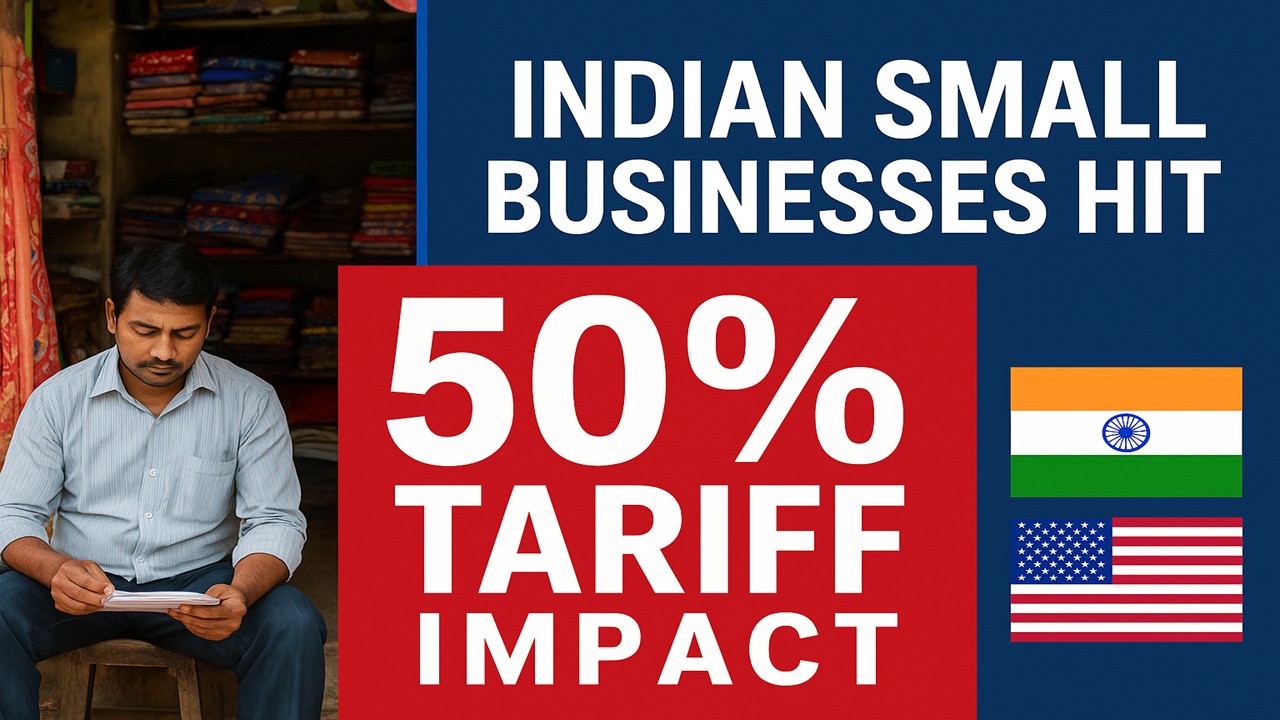
हिंदी में पढ़ने के लिए मेनू बार से हिंदी भाषा चयन करें।
The U.S. decision to impose 50% tariffs on Indian goods under the Trump administration has shaken India’s business landscape. While large corporations have the resources to absorb the shock, small businesses in India are scrambling to manage rising costs, export challenges, and reduced competitiveness in the American market.
Current Situation after 50 % Tariffs
- The U.S. is one of the largest trading partners of India, especially in textiles, leather, handicrafts, chemicals, engineering goods, and IT services.
- With the sudden tariff hike, Indian exporters are facing higher costs of entry into the American market.
- Buyers in the U.S. are already reconsidering sourcing options, shifting towards cheaper alternatives from Vietnam, Bangladesh, and Mexico.
- Small enterprises, which contribute 40% of India’s total exports, are the hardest hit because they lack the financial buffers that bigger companies have.
Also Read– US Slaps 50% Tariff on India — Markets Shaken, Exporters Worried
Impact on Small Businesses
1. Rising Costs
Small exporters will have to either increase prices (risking loss of customers) or absorb the extra cost (shrinking profit margins).
2. Supply Chain Pressure
Raw material costs, shipping, and compliance expenses will increase, creating cash flow problems for small units.
3. Job Loss Risk
India’s MSME sector employs over 110 million people. With falling demand, many businesses may cut jobs or reduce wages.
4. Sector-Specific Pain
- Textiles & Apparel: Higher tariffs make Indian products expensive compared to Bangladesh and Vietnam.
- Leather Goods: A key export category to the U.S., likely to lose market share.
- IT Services: Though less affected by tariffs, possible spillover impact if U.S.-India trade tensions rise.
Government & Industry Response
- The Indian government has raised concerns at the WTO and is expected to negotiate relief.
- Trade bodies like FIEO (Federation of Indian Export Organisations) are urging financial support, tax breaks, and subsidies for MSMEs.
- Banks may step in with soft loans to help exporters manage cash crunch.
Future Possibilities
- Short-Term: Exporters may face order cancellations, margin squeeze, and layoffs.
- Medium-Term: India might look for alternate export markets (EU, Middle East, Africa).
- Long-Term: If trade tensions persist, India will accelerate its push for self-reliance (Atmanirbhar Bharat), expand domestic markets, and enter bilateral trade deals with other nations.
Analysis
The 50% tariff is not just an economic barrier, but also a political move signaling tougher U.S.-India trade relations. Small businesses, already struggling with high interest rates, inflation, and global slowdown, now face a major survival challenge.
- Winners: Competitor nations like Vietnam, Bangladesh, and Mexico.
- Losers: Indian MSMEs dependent on U.S. markets.
Outcome
India’s small businesses stand at a critical juncture. The tariff shock highlights the urgent need to diversify export markets, improve competitiveness, and secure policy support. If handled strategically, India could turn this crisis into an opportunity by pushing for innovation, new markets, and stronger trade alliances. Otherwise, the immediate fallout may include job losses, business closures, and declining exports in sensitive sectors.




































































